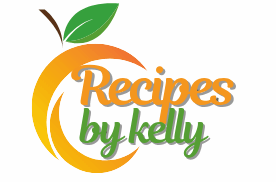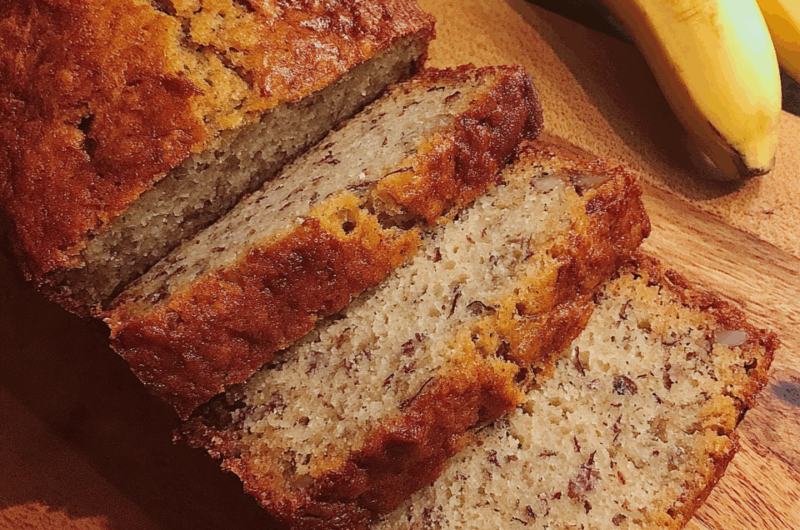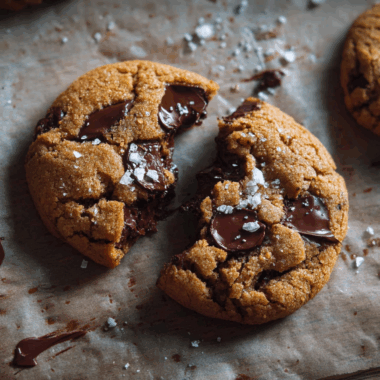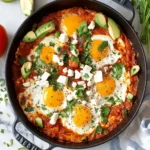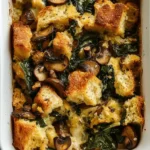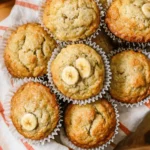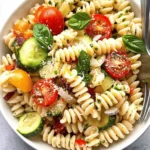This banana bread with oil is a classic twist on a traditional favorite. Perfect for when you’re out of butter or seeking a dairy-free option, it uses ripe bananas and simple pantry staples to deliver maximum flavor and incredible moisture. With no butter in sight, the result is still rich and tender, with a golden-brown crust and melt-in-your-mouth crumb.
Whether you enjoy a thick warm slice with your morning coffee or pack it as a midday treat, this easy banana bread recipe is versatile and crowd-pleasing. Add in chocolate chips, walnuts, or enjoy it plain—every bite brings cozy homemade comfort. It’s the go-to recipe you didn’t know you needed.
Full Recipe:
-
3 ripe large bananas (about 1 ½ cups mashed)
-
½ cup vegetable oil (such as canola or corn oil)
-
2 large eggs
-
1 cup white granulated sugar
-
2 cups all-purpose flour
-
1 teaspoon vanilla extract
-
1 teaspoon baking soda
-
1 teaspoon baking powder
-
½ teaspoon salt
-
Optional: 1 teaspoon ground cinnamon
-
Optional Add-Ins: 1 cup chocolate chips or chopped walnuts
Directions:
-
Preheat oven to 325°F (163°C). Grease a 9×5 inch metal loaf pan or line it with parchment paper.
-
Mash bananas with a fork in a large mixing bowl until smooth.
-
Lightly beat the eggs and add them to the mashed bananas.
-
Stir in the vegetable oil and sugar until fully combined.
-
Add the vanilla, baking soda, baking powder, salt, and cinnamon (if using).
-
Gently fold in the flour until just mixed. Do not overmix.
-
If desired, stir in chocolate chips or walnuts.
-
Pour the batter into the prepared loaf pan and smooth the top.
-
Bake for 65–70 minutes or until a toothpick inserted into the center comes out clean.
-
Cool in the pan for 10 minutes before transferring to a wire rack to cool completely.
Prep Time: 10 minutes | Cooking Time: 70 minutes | Total Time: 1 hour 20 minutes
Kcal: 257 kcal | Servings: 12 slices
Introduction to Banana Bread with Oil (No Butter)
Banana bread has long been a beloved staple in homes around the world—warm, comforting, and made with ripe bananas that might otherwise go to waste. What makes this version of banana bread stand out is its thoughtful exclusion of butter. Instead, it relies on a neutral vegetable oil to create an incredibly moist texture without compromising flavor. Whether you’re out of butter, following a dairy-free diet, or simply exploring healthier baking alternatives, banana bread made with oil is a go-to recipe that checks all the boxes.
This recipe is simple yet satisfying, proving that baking doesn’t have to be complicated to yield impressive results. It’s also incredibly versatile. With just a few tweaks, this loaf can be customized to suit your preferences—from the addition of chopped walnuts for crunch, to chocolate chips for a touch of indulgence. But even in its most basic form, this banana bread delivers on flavor, texture, and convenience.
Why Bake Banana Bread Without Butter?
There are several reasons to swap out butter in banana bread recipes, and none of them mean sacrificing taste. First and foremost, using oil instead of butter makes the recipe dairy-free, a key concern for people with lactose intolerance or those following a plant-based diet (if you also replace eggs). Oil also contributes to a more consistently moist crumb, thanks to the fact that it stays liquid at room temperature, unlike butter, which solidifies.
In many households, butter isn’t always readily available. The beauty of this recipe is that it’s built for those moments—you crave banana bread, but the fridge is empty. Instead of making a last-minute grocery store run, you can reach for pantry staples like vegetable oil and sugar and whip up a loaf that feels just as indulgent and delicious as a traditional version.
Additionally, from a nutritional standpoint, replacing butter with certain types of oils can reduce the saturated fat content in the loaf. This makes it a better option for those managing cholesterol or heart health. While this doesn’t make the banana bread health food per se, it’s certainly a step in the right direction when it comes to conscious ingredient choices.
The Science Behind Using Oil Instead of Butter
One of the most noticeable differences when using oil in place of butter is the improved moisture retention. Vegetable oils, especially those with a neutral flavor like canola or corn oil, do not interfere with the banana flavor while offering a more tender crumb. Butter, which is solid at room temperature, tends to firm up after the loaf cools, whereas oil helps maintain that soft texture for days.
From a baking science perspective, oil has a higher fat content per gram than butter because butter contains water. This contributes to a more luscious texture in baked goods. For banana bread, where richness and softness are paramount, this switch can actually be an upgrade rather than a compromise.
Also, for those baking in larger quantities or more frequently, vegetable oil tends to be more affordable and easier to store than butter. It requires no refrigeration and typically has a longer shelf life, making it a budget-friendly and practical choice.
Texture and Taste Comparison: Oil vs Butter
Many people associate butter with superior flavor in baked goods. While butter certainly imparts a richness and aroma that’s hard to match, banana bread made with oil is surprisingly flavorful—especially when using very ripe bananas. The natural sweetness and depth of flavor in the bananas shine more brightly without the heavier buttery notes, which can sometimes overshadow the fruit.
In terms of texture, oil-based banana bread often has a lighter, softer, and more uniform crumb. It tends to stay moist longer than its butter-based counterpart, especially when stored properly in an airtight container. This makes it perfect for meal-prepping snacks for the week or making in advance for gatherings.
Moreover, oil tends to make the loaf rise a bit more evenly, reducing the chances of dense or gummy pockets in the bread. This is particularly important for new or occasional bakers who may not yet have the confidence to perfect mixing techniques that butter-based recipes often require.
Banana Ripeness: The Secret to Flavor Success
One of the key elements of any banana bread, especially one that doesn’t rely on butter for richness, is the ripeness of the bananas. The riper the banana, the sweeter and more flavorful the bread. Ideally, the bananas should have several dark spots on the peel or be almost entirely blackened. At this stage, bananas have converted most of their starches to sugar, contributing both sweetness and moisture to the final product.
Using unripe or even just yellow bananas can result in a bland, dry loaf. It’s worth the wait to let your bananas ripen naturally on the counter. If you’re in a hurry, you can speed up the process by placing them in a brown paper bag for a day or two, or even roasting them in the oven for a few minutes to bring out the sugars.
Customization Ideas and Add-In Variations
One of the best things about banana bread is how easily it can be customized. This oil-based version is a perfect blank canvas for creativity. Here are some ideas to personalize your loaf:
-
Nuts: Walnuts, pecans, or hazelnuts add crunch and a nutty richness.
-
Chocolate Chips: A crowd-pleaser that turns your banana bread into dessert.
-
Dried Fruit: Cranberries, raisins, or chopped dates add texture and natural sweetness.
-
Spices: Cinnamon, nutmeg, ginger, or even cardamom can enhance the overall flavor.
-
Toppings: Sprinkle oats, chopped nuts, or a cinnamon-sugar mixture on top before baking for a beautiful crust.
Each of these additions adds its own character to the bread and can be adjusted depending on dietary restrictions, preferences, or what you have on hand.
Storage and Freshness Tips
Thanks to the use of oil, this banana bread stays fresh longer than many other quick breads. Once cooled completely, it should be wrapped tightly in plastic wrap or stored in an airtight container. It can last at room temperature for up to 3–4 days and can also be refrigerated for longer shelf life.
For long-term storage, banana bread freezes extremely well. Simply wrap individual slices or the entire loaf in plastic wrap, then again in aluminum foil, and freeze for up to three months. When you’re ready to enjoy it, thaw it overnight in the refrigerator or microwave individual slices for a quick treat.
Dietary Considerations and Modifications
This recipe is naturally dairy-free, making it suitable for those with lactose intolerance or dairy allergies. To make it fully plant-based, eggs can be substituted with flax eggs, chia eggs, or a store-bought egg replacer.
If you’re looking to reduce sugar, try using ¾ cup instead of a full cup, especially if your bananas are ultra ripe. Natural sweeteners like maple syrup or honey (if not vegan) can also be experimented with—though adjustments to flour or baking time may be required to maintain structure and moisture balance.
For those avoiding refined flour, whole wheat flour or a 50/50 mix with all-purpose can be used, though this will slightly alter the texture, making it denser.
Perfect for Any Occasion
Banana bread with oil is a versatile recipe that fits almost any situation. It makes for a comforting breakfast with coffee, a hearty afternoon snack, or a wholesome dessert after dinner. It’s also ideal for gifting, as it travels well and suits most dietary needs.
Whether you’re baking for your family, prepping school lunchboxes, or looking for a weekend project, this recipe delivers dependable results with minimal fuss. The fact that it uses everyday pantry items means you’re always just a few ripe bananas away from something delicious.
Conclusion
Banana bread made with oil and no butter proves that you don’t need dairy to achieve a moist, flavorful, and satisfying quick bread. This version is not only easy to make but also adaptable, forgiving, and suited for almost every kind of baker—from beginners to seasoned pros. It’s an economical, healthier alternative to butter-based recipes, and it retains freshness and texture far longer than you’d expect.
With just a few simple ingredients and a little mixing, you can create a loaf that rivals any bakery version. So the next time you spot overripe bananas on your counter, don’t toss them—turn them into something golden and glorious with this butter-free banana bread.
